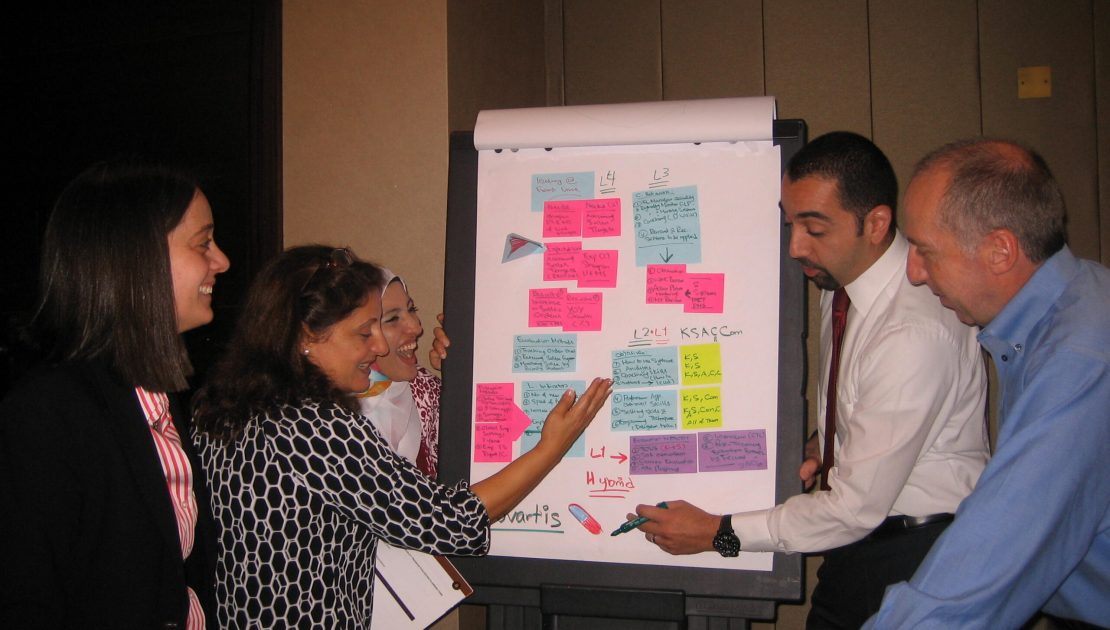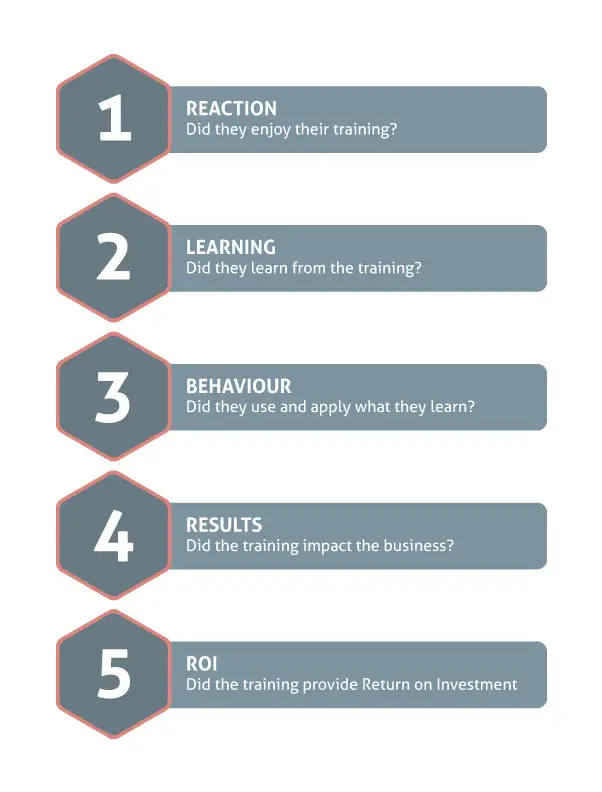LEVEL 1 – REACTION
Reaction evaluation is the measurement of how the delegates felt about the training or learning experience.
- Did they like it?
- Did they find it relevant?
- Did they like the venue, trainer…?
- Was it a good use of their time?
This level can be measured via feedback forms, surveys, questionnaires, verbal reaction etc.
LEVEL 2 – LEARNING
Learning evaluation is the measurement of the increase in knowledge, skills and abilities of the learners
- Did they learn what they were supposed to learn?
- Did they experience what they were supposed to experience?
This level can be measured through tests and assessments before and after training. Interviews or observation can also be used.
LEVEL 3 – BEHAVIOUR
Behaviour evaluation is the measurement of the capability of the learners to change their behaviour and apply new skills and knowledge.
- Did they use their knowledge?
- Were the relevant skills used?
- Did their performance noticeably change?
This level can be measured through testing, observations and interviews over time.
LEVEL 4 – RESULTS
Result evaluation is the measurement of the impact of the training on the business.
- Did the training impact the bottom line?
- Has the training impacted KPIs? (Staff turnover, number of complaints, non-compliance, sales, wastage, growth, retention…)
This level is measured via indicators already in place within the company’s learning management systems and reporting. The challenge is to relate them back to the trainees.
The next level..ROI
Since then, a fifth level has been created by Jack J. Phillips, PhD, chairman of the ROI Institute and a world-renowned expert on measurement and evaluation. His theory is that Kirkpatrick’s four levels only focus on the effectiveness of the training but not on monetary benefits (ROI).
In the current economic environment, it is critical for training providers and HR departments to demonstrate the value and accountability for their training.
Known as ROI, the fifth level quantify the monetary value of training investments. In other words, “For every pound invested in training, how many pounds does the employer get back?”. A financial measure of training value, the fifth level does not however provide information to improve training.
Kirkpatrick’s legacy
Although over half a century old, Kirkpatrick’s four levels model is still the most popular and the most widely used model for the evaluation of training and learning. It is considered an industry standard across HR and training communities and, to this date, no better method has been created.
Although over half a century old, Kirkpatrick’s four levels model is still the most popular and the most widely used model for the evaluation of training and learning. It is considered an industry standard across HR and training communities and, to this date, no better method has been created.
Sources:


